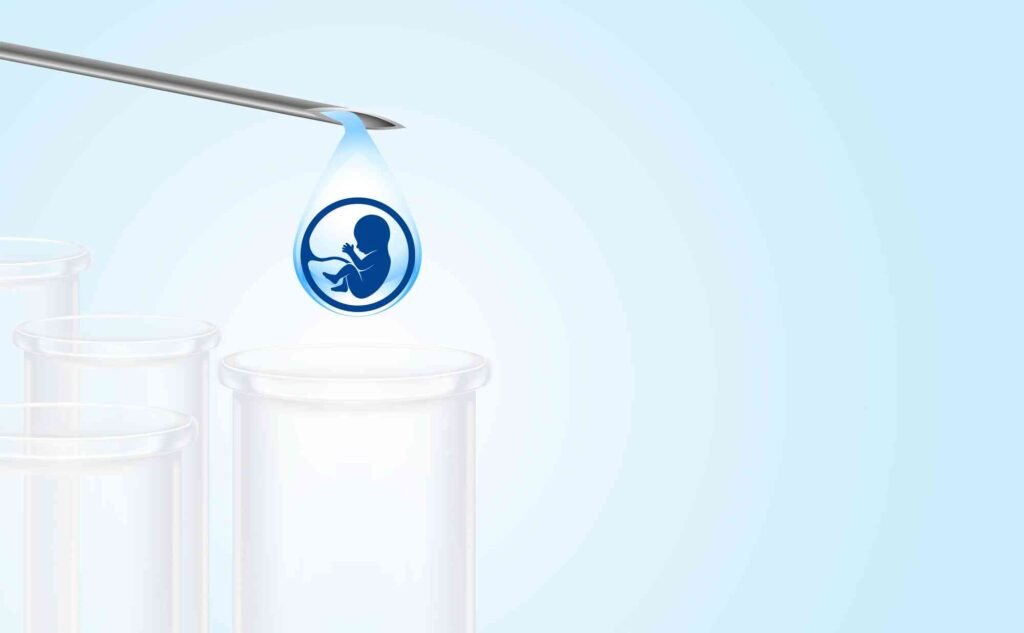IVF vs Test Tube Baby: Clearing the Confusion
When it comes to fertility treatments, two terms often pop up in conversations: IVF vs Test Tube Baby. Many people wonder whether these two are different procedures or simply two names for the same thing. The truth is, the confusion comes from history, terminology, and popular culture. Let’s sit down together and untangle this knot in a way that feels simple, approachable, and crystal clear.
Why People Get Confused Between IVF and Test Tube Baby?
The phrase “test tube baby” was first used back in 1978 when Louise Brown, the world’s first baby conceived through in vitro fertilization, was born in England. The media picked up on the idea of embryos being created “in a test tube,” even though, scientifically, embryos are actually cultured in Petri dishes.
Since then, people have casually used “test tube baby” as a nickname for IVF babies. That’s where the confusion between IVF vs Test Tube Baby really started. In medical practice, doctors rarely use the term “test tube baby” anymore—it’s more of a layperson’s phrase—but it’s still stuck in public vocabulary.

What is IVF?
In Vitro Fertilization (IVF) is a medical procedure where eggs and sperm are combined outside the body in a lab setting. Here’s the simple step-by-step breakdown:
- Ovarian stimulation – The woman takes fertility medications to produce multiple eggs.
- Egg retrieval – Doctors collect the eggs using a minimally invasive procedure.
- Fertilization – The eggs are fertilized with sperm in the laboratory.
- Embryo culture – The fertilized eggs (embryos) are monitored for several days.
- Embryo transfer – A healthy embryo is placed into the uterus to begin pregnancy.
That’s IVF in a nutshell. Notice that at no point does anyone actually use a test tube—it’s just precise medical equipment and sterile lab culture dishes.
What Does “Test Tube Baby” Mean?
When you hear “test tube baby,” it doesn’t describe a different procedure. It’s just an informal way to refer to babies born through IVF. Back in the late 1970s and early 80s, the phrase created a sense of wonder and even controversy. People imagined scientists mixing life in test tubes, which sounded like science fiction. In reality, it was simply a less technical way to say IVF.
So, when we talk about IVF vs Test Tube Baby, we’re not comparing two separate treatments. We’re comparing a clinical term (IVF) with a popular nickname (test tube baby).
The Science vs The Terminology
To make things even clearer:
- IVF = The actual medical procedure.
- Test Tube Baby = The cultural or layman’s way of referring to an IVF baby.
Think of it like this: calling someone a “firefighter” vs. “hero with a hose.” One is technical, the other is descriptive. Both point to the same person. Similarly, IVF and test tube babies point to the same process and outcome.

Common Misconceptions Around IVF vs Test Tube Baby
Because of the terminology mix-up, a lot of myths circulate. Let’s bust a few:
- Myth: Test tube babies are “artificial.”
Truth: IVF babies are conceived with natural eggs and sperm, just outside the body. They’re as natural and healthy as any other baby. - Myth: Test tube baby means the child grows in a lab.
Truth: The embryo is only nurtured in a lab dish for a few days before being placed into the mother’s womb, where normal pregnancy continues. - Myth: IVF babies are weaker or different.
Truth: Millions of IVF-conceived babies worldwide are healthy, strong, and no different from naturally conceived children. - Myth: IVF and test tube baby are two separate treatments.
Truth: They’re the same process described in different words.
Why Does the Term “Test Tube Baby” Stuck Around?
Language is powerful. When Louise Brown was born, newspapers were looking for headlines that grabbed attention. “Test Tube Baby” sounded sensational and was easy for people to understand at the time.
Even though science has moved forward, catchy terms stick. Many people who aren’t familiar with medical terms still feel more comfortable saying “test tube baby” instead of IVF. It’s one of those phrases that has cemented itself in everyday conversation, even if it’s not technically accurate.

How IVF Has Evolved Since the First Test Tube Baby?
Back in the late 70s, IVF success rates were low, and the procedure was considered experimental. Fast-forward to today, and IVF has become one of the most advanced and effective fertility treatments in the world. Here are a few milestones:
- Improved success rates – Modern IVF success rates can be as high as 40–60% per cycle in younger women.
- ICSI (Intracytoplasmic Sperm Injection) – Introduced in the 1990s, this technique helps with severe male infertility.
- Genetic testing (PGT/PGS) – Allows screening embryos for chromosomal issues before transfer.
- Frozen embryo transfer (FET) – Offers flexibility and often higher success than fresh transfers.
- Egg and embryo freezing – Gives women more control over family planning.
IVF vs Test Tube Baby: Which Term Should You Use?
If you’re talking to a doctor, always say IVF. It’s the professional, accurate term that medical experts recognize. If you’re talking to a friend, neighbor, or elder who may not know the medical terminology, saying “test tube baby” might be easier.
The important thing is understanding that there’s no difference in process or outcome. Whether you call it IVF or a test tube baby, the joy of holding your child remains the same.
Addressing Emotional Concerns
For many parents-to-be, the terminology isn’t just about science—it’s emotional. Some feel offended when someone calls their child a “test tube baby,” thinking it implies artificiality. Others embrace it as a badge of pride, symbolizing the journey they took to become parents.
That’s why clarifying the terms is so important. Understanding that IVF vs Test Tube Baby is a matter of words, not procedure, helps reduce stigma and unnecessary emotional weight.
The Future of IVF
Science continues to move forward. We now have:
- AI in embryo selection – Helping doctors choose the healthiest embryos.
- Stem cell research – Offering hope for creating eggs and sperm from skin cells in the future.
- More affordable treatments – Making IVF accessible to a broader population.
In the coming decades, IVF will likely become even more common, and the term “test tube baby” may eventually fade into history books. But for now, the two terms continue to coexist.

Final Thoughts on IVF vs Test Tube Baby
At the end of the day, IVF vs Test Tube Baby isn’t really a competition. They are two sides of the same coin. IVF is the scientific name of the process, while test tube baby is a nickname born from media sensationalism and cultural usage.
If you ever find yourself confused, remember this simple takeaway: IVF is the procedure, and a test tube baby is just what people call a baby born from that procedure. There’s no difference in the child’s health, naturalness, or worth. They’re simply beautiful babies, conceived with a little help from science.
So, whether you prefer to call it IVF or use the more old-fashioned term “test tube baby,” what matters most is the dream of parenthood coming true.



